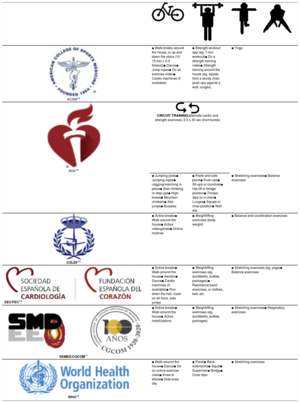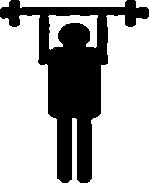Since its emergence in Wuhan (China) at the end of December 2019, the coronavirus disease 2019 (COVID-19) has spread rapidly around the world. On January 30, 2020, the World Health Organization (WHO) declared it as public health emergency of international concern and in less than 2 months, on March 11, classified it as a pandemic.1,2 In early April, more than 950 000 cases were confirmed, with more than 48 000 deaths worldwide.3
Although China is managing to slow the incidence of new infections through extremely disciplined measures, European countries such as Italy and Spain, and most recently the United States, have been overwhelmed by the current emergency. Thus, many countries have declared indefinite quarantines aiming to decrease the infection rate and avoid overloading health systems. Lockdown is considered the best option to protect health, but in particularly vulnerable people (those aged ≥ 65 years, and those with serious heart conditions, chronic lung disease, diabetes, obesity, and chronic kidney and liver disease), sedentary behaviors have a strong impact. Therefore, it is important to preserve lifestyles and particularly the practice of physical exercise.
There is irrefutable evidence of the beneficial role of physical exercise in disease prevention, as an adjuvant treatment in chronic diseases, and in psychological wellbeing. Furthermore, exercise could also have a protective effect on the immune system, whose optimal status is crucial to respond adequately to the threat of COVID-19.4 This is especially important in chronically ill patients,5 who are the most affected by “the enemy”. However, this point is unresolved and further research is needed to clarify whether any type of exercise (volume, intensity) increases susceptibility to infection.6 Maintaining physical activity levels is key to addressing sedentary behavior as well as to mitigating the psychological impact of quarantine,7 since sedentariness has a well known detrimental effect on cardiovascular function. In view of the current lockdown, it has become necessary to modify and adapt regular exercise programs from outdoor to home conditions, taking advantage of both the space and material available. It is of the utmost importance to follow the recommendations of scientific societies, health institutions and experts. However, there are still doubts on the most suitable characteristics of the exercise to be taken, such as type, frequency, duration, volume, and intensity.
For a long time, 10 000 steps/d have been established as the minimum amount necessary for a person to be considered “physically active”, with a slightly lower number for elderly and chronically ill patients (7000-10 000) and higher digits for children and adolescents (> 11 000-13 000, approximately).8 Recently, this threshold has been questioned and a lower mortality rate has been found in older women who walked 4400 steps/d, obtaining the maximum benefits at 7500 steps/d.9 Moreover, the role of intensity seems to be decisive in achieving these recommendations, and the number of steps can be reduced if cadence is increased at certain times of the day (≥ 100 steps/min) or if the activity is vigorous. In parallel, the physical activity guidelines for Americans, published by the United States Department of Health and Human Services, advises at least of 150 to 300min/wk of moderate-intensity, or 75 to 150min/wk of vigorous-intensity aerobic physical activity for healthy adults, with a minimum of 2 muscle-strengthening sessions per week. Specifically, children and adolescents are encouraged to do > 60minutes of moderate-to-vigorous activity per day, while elderly persons and those with chronic diseases should perform multicomponent programs including aerobic, strengthening, flexibility, and balance exercises.10 However, since 1 in 4 adults worldwide do not meet the minimum recommendations, and the current lockdown makes it even more difficult, a new approach is required to achieve a level of healthy physical exercise.
We agree completely with the statement that, in terms of cardiovascular health, “something is better than nothing”.11 Nonetheless, we intend to establish more precise knowledge about the most beneficial exercise guidelines, bearing in mind the individual demands of each person and the particular situation of the quarantine. In this regard, Jiménez-Pavón et al.12 have performed an exhaustive critical analysis of the most appropriate recommendations for exercise, especially those targeting the elderly. The authors have brilliantly suggested adjusting the international guidelines on physical activity to the current situation. In this way, they propose increasing exercise frequency from 5 to 5-7 days per week, the amount of aerobic exercise from 150-300 to 200-400min/wk, incorporating more strength training, balance and coordination routines, and controlling the intensity, which should be moderate to avoid detrimental effects. Based on these ideas, we analyzed the exercise guidelines created specifically by several of the most renowned health care institutions, both internationally and nationally (Spain). Table 1 summarizes the main recommendations of each of these institutions13–18.
Summary of the exercise recommendations by the main health care institutions
| ACSM13 | ▪ Walk briskly around the house, or up and down the stairs (10-15 min x 2-3 times/d) ▪ Dance ▪ Jump ropes ▪ Do an exercise video ▪ Cardio machines (if available) | ▪ Strength workout app (eg, 7-min workout) ▪ Do a strength training video ▪ Strength training around the house (eg, squats from a sturdy chair, push-ups against a wall, lunges) | ▪ Yoga |
| AHA14 | CIRCUIT TRAINING(alternate cardio and strength exercises; 2-3 x 30 sec short bursts) | ||
▪ Jumping jacks ▪ Jumping ropes ▪ Jogging/marching in place ▪ Stair climbing or step-ups ▪ High knees ▪ Mountain climbers ▪ Star jumps ▪ Burpees | ▪ Plank and side plank ▪ Push-ups ▪ Sit-ups or crunches ▪ Hip-lift or bridge position ▪ Triceps dips on a chair ▪ Lunges ▪ Squats or chair position ▪ Wall sits | ▪ Stretching exercises ▪ Balance exercises | |
| COLEF15 | ▪ Active breaks ▪ Walk around the house ▪ Active videogames ▪ Online routines | ▪ Weightlifting exercises (body weight) | ▪ Balance and coordination exercises |
| SEC/FEC16 | ▪ Active breaks ▪ Walk around the house ▪ Aerobic ▪ Dance ▪ Cardio machines (if available) ▪ Run down the hall, crawl on all fours, side jumps | ▪ Weightlifting exercises (eg, dumbbells, bottles, packages) ▪ Resistance band exercises, or clothes, belt, etc. | ▪ Stretching exercises (eg, yoga) ▪ Balance exercises |
| SEMED/CGCOM17 | ▪ Active breaks ▪ Walk around the house ▪ Active mobilizations | ▪ Weightlifting exercises (eg, dumbbells, bottles, packages) | ▪ Stretching exercises ▪ Respiratory exercises |
| WHO18 | ▪ Walk around the house ▪ Dance ▪ Do an online exercise class ▪ Knee to elbow ▪ Side knee lifts | ▪ Plank ▪ Back extensions ▪ Squat ▪ Superman ▪ Bridge ▪ Chair dips | ▪ Stretching exercises |
ACSM, American College of Sports Medicine; AHA, American Heart Association; CGCOM, Consejo General de Colegios Oficiales de Médicos; COLEF, Consejo General de la Educación Física y Deportiva; ESSA, Exercise & Sport Sciences Australia; SEC, Sociedad Española de Cardiología; SEMED, Sociedad Española de Medicina del Deporte; WHO, World Health Organization.
Overall, all the entities provide the same general recommendations, which is to remain active at home, take short active breaks, and avoid excessive sedentary periods. Following these recommendations, the organizations show some examples of exercises that can be done at home, including both aerobic and strength training. As shown in table 1, the American Heart Association (AHA) suggests a weight and cardio combined circuit training program. In addition to this, the AHA, the WHO, the Spanish Society of Cardiology/Spanish Heart Foundation (Sociedad Española de Cardiología/Fundación Española de Corazón, SEC/FEC), and the Spanish Society of Sports Medicine (Sociedad Española de Medicina del Deporte, SEMED) include stretching exercises among their protocols; SEMED also includes respiratory exercises, while AHA and SEC/FEC recommend activities to improve balance. Nevertheless, none of the institutions make specific recommendations on series and repetitions, intensity or frequency, and most of them advise using online classes or mobile apps.
Portable health gadgets have ensured that it has never been easier for users without prior knowledge to quantify and monitor exercise routines. However, due to the wide range of platforms dedicated to the promotion of physical exercise, it is necessary to consult information channels developed by scientific societies, clinicians and sports health professionals to achieve optimal cardiovascular and skeletal muscle fitness, within the limits allowed by the quarantine.
In conclusion, the most representative institutions in terms of physical exercise and health have created spaces and recommendations to encourage people to continue to be physically active during the lockdown. The population should perform multicomponent full-body programs including aerobic, strengthening, balance, and stretching exercises. Furthermore, cognitive tasks are strongly recommended in the elderly to preserve cognitive ability and brain activity.
CONFLICTS OF INTERESTThe authors declare no potential conflicts of interest with respect to the research, authorship and/or publication of this article.











